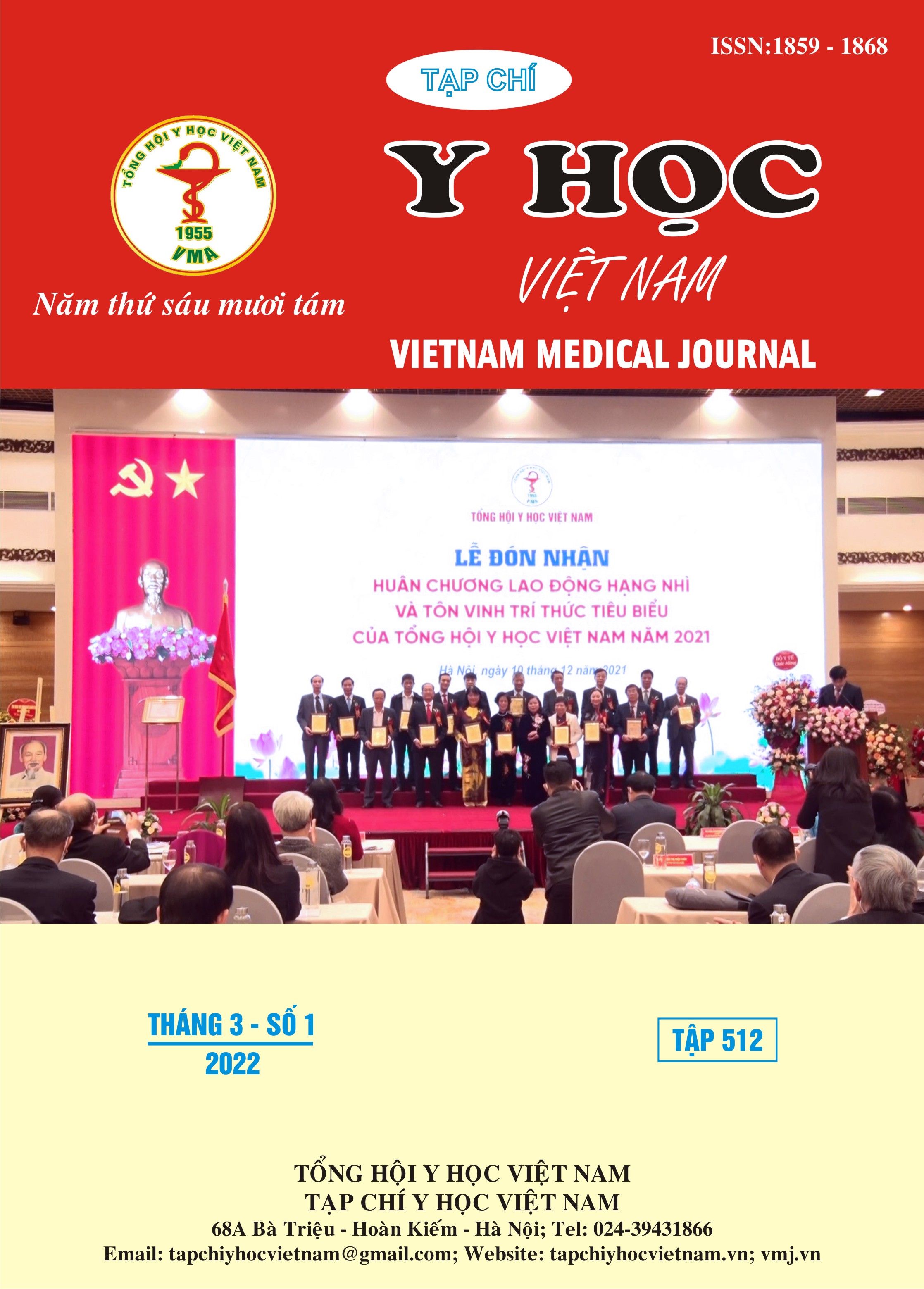CHARACTERISTICS OF CARDIO-ANKLE VASCULAR INDEX IN PATIENTS WITH TYPE 2 DIABETES WITH FOOT ULCERS
Main Article Content
Abstract
Objectives: Survey on cardio-ankle vascular index characteristics in type 2 diabetes patients with foot ulcers. Subjects and study methods: 401 subjects were inpatients being treated at the National Hospital of Endocrinology since November 2014 (47 patients in the control group, 176 patients with type 2 diabetes with foot ulcers, 178 patients with type 2 diabetes without foot ulcers). Research Methods: A cross-sectional descriptive study. Results: The mean CAVI of the control group was 6.93 ± 0.83; diabetic group without foot ulcer 8.92 ± 1.93 and diabetic with foot ulcer 9.66 ± 2.02 (p<0.001). There was a statistically significant difference in mean CAVI by age group, time of detection and hypertension status. Conclusion: The CAVI index of the diabetic foot ulcer group was higher than that of the diabetic without foot ulcer group and the control group. CAVI tends to increase gradually by age group and duration of diabetes. CAVI was higher in the hypertensive group than in the non-hypertensive group.
Article Details
Keywords
CAVI, diabetes mellitus, diabetic foot ulcer
References
2. Lamacchia O, Sorrentino M R, Picca G et al (2019), "Cardio-ankle vascular index is associated with diabetic retinopathy in younger than 70 years patients with type 2 diabetes mellitus", Diabetes research and clinical practice. 155, 107793.
3. Nuamchit T., Siriwittayawan D., Thitiwuthikiat P. (2020), "The Relationship Between Glycemic Control and Concomitant Hypertension on Arterial Stiffness in Type II Diabetes". 16, 343-352.
4. Mineoka, Y.; Fukui, M.; Tanaka, M. et al (2012), "Relationship between cardio-ankle vascular index (CAVI) and coronary artery calcification (CAC) in patients with type 2 diabetes mellitus", Heart Vessels. 27(2), 160-5.
5. Hitsumoto Takashi (2018), "Clinical significance of cardio-ankle vascular index as a cardiovascular risk factor in elderly patients with type 2 diabetes mellitus", Journal of clinical medicine research. 10(4), 330.
6. Park So Young, Chin Sang Ook, Rhee Sang Youl et al (2018), "Cardio-ankle vascular index as a surrogate marker of early atherosclerotic cardiovascular disease in Koreans with type 2 diabetes mellitus", Diabetes & metabolism journal. 42(4), 285-295.
7. Elosua-Bayés M., Martí-Lluch R., García-Gil M. D. M. et al (2018), "Association of Classic Cardiovascular Risk Factors and Lifestyles With the Cardio-ankle Vascular Index in a General Mediterranean Population", Rev Esp Cardiol (Engl Ed). 71(6), 458-465.


